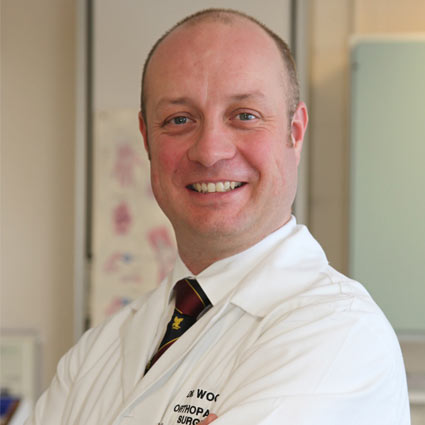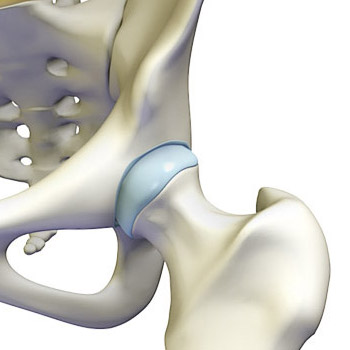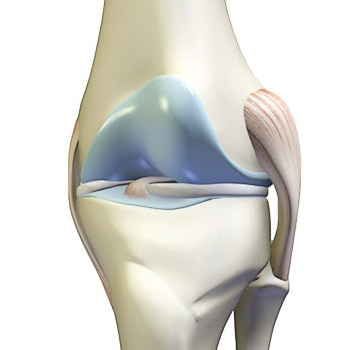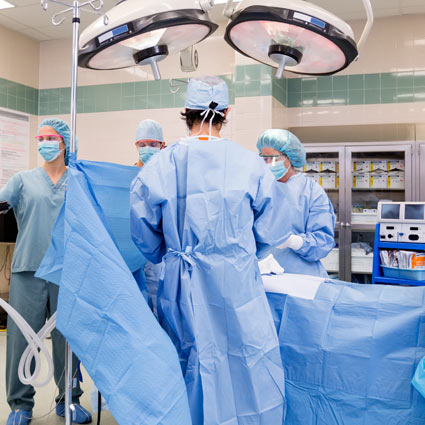Any surgeon can operate, but a great surgeon is one who knows what to operate on and when – doing it right the first time is the key.

What We Do
Dr. Wood performs many orthopaedic surgeries and is recognised with expertise in the surgeries:
Hip Surgeries
- Total Hip Replacement
- Hip Resurfacing
- Hip Arthroscopy
- Open Surgical Dislocation Hip
- Other Hip Preserving Surgeries
Knee Surgeries
Trauma Surgery
Surgery is a skill and an art, but the bigger challenge is knowing when to operate and what operation to do. A previous mentor once said, Any surgeon can operate, but a great surgeon is one who knows what to operate on and when – doing it right the first time is the key.
Whilst Dr. Wood recognizes many surgeries are beneficial to patients, not every patient requires surgery and conservative and non-operative treatments should always be exhausted first.

Hip Surgeries
Total Hip Replacement
Hospital Stay: Same day Surgery or 1 night stay
For a typical Hip Replacement surgery performed by Dr. Wood, the patient is placed on their side and positioned carefully and held in place with hip positioners. The approach used is the posterior approach and can be watched in this Birmingham Hip Resurfacing video. It is an approach which spares the hip abductor muscles, which are essential for hip strength. The advantage of such an approach is less risk of limp and return to normal gait quicker after surgery.
The implants used are chosen depending on the patient age, bone quality and lifestyle of the patient. Implants are either cemented into place using a polymethyl-methacrylate substance or are un-cemented where the implants are press-fit or jammed into the bony skeleton. The long-term outcomes of such implants from around the world are published annually in Joint Registries. These publications and results are available through Patient Resources section. The new bearing surface of the hip can vary independent of how the implant is fitted. Bearing surfaces can be metal on polyethylene, ceramic on ceramic, ceramic on polyethylene or metal on metal. This essentially is describing the ball and socket bearing of the new hip joint.
The patients are fully weight bearing after the surgery and walking with restrictions until 6 weeks. Most patients forgoe the need for walking aids less than 6 weeks after surgery. Review our full rehab protocols and advice further.
More on Total Hip Replacements
Hip Resurfacing
Hospital Stay: 1 night stay
Hip Resurfacing is a type of total hip replacement. It was designed and introduced for young adult patients with high demand. The maintenance of femoral bone stock being an advantage for further revision surgery in the future as these young patients would likely need revision surgery as they grew older and the components wore out. There has been a number of devices manufactured under this type of surgery, some of which have now been recalled due to high failure rates, some receiving some bad press. The result of some failures and issues with this type of implant has highlighted the importance of which patient should receive such an operation, the manufacturing process is critical as is the size and position it should be placed. Therefore only a specialist with this implant who is aware of all these issues should perform such surgery. The end result is this is a niche product which put in properly can have excellent results.
Dr. Wood uses this implant for young adult males with active lifestyles, good bone quality, no leg length discrepancy, and uses computer navigation to place the components in precise position. Patients listed for such surgery have a CT scan prior to surgery for surgical planning. The procedure itself, approach, and rehabilitation is the same as done with a Total Hip Replacement procedure.
You can view the Hip Resurfacing surgical procedures used by Dr. Wood on our Patient Resources.
Hip Arthroscopy
Hospital Stay: Day case surgery
Hip Arthroscopy is a procedure carried out for Femoral Acetabular Impingement and labral tears mainly but also used for removal of loose bodies, synovectomy, iliopsoas release, instability, bursectomy, iliotibial band release, infection and diagnostic purposes. The use of this procedure for early degenerative process or arthritis is not indicated.
The procedure is a form of keyhole surgery performed by passing a small scope or camera into the joint and passing long instruments into the hip. X-ray is used throughout the procedure to guide the surgeon. The use of a special traction table is required to pull on the hip to distract the joint and allow the instruments to be passed into the joint. A number of small incisions approx 1 cm in length are required. Surgery can take from 40 mins to 2.5hrs. Local anaesthetic is introduced at the end and wounds closed with small absorbable stitches and paper stitches. The surgery is carried out under general anaesthetic and as a day case procedure.
All patients should have a detailed rehab protocol on leaving the hospital and are reviewed at 4 weeks.
View a video of Dr. T. Byrd performing a Hip Arthroscopy.
Open Surgical Dislocation Hip
Open surgical dislocation of the hip was popularized by Dr. Ganz in Austria for the conditions that are now mainly done through hip arthroscopy. Occasionally such an approach is still used in certain cases to address hip complaints whilst preserving the natural hip joint and bone.
An incision similar to that used for hip replacement is used. The Greater Trochanter where the abductor muscles attach is cut and moved with the muscles to allow access to the hip joint. This is reattached at the end with screws and the patient placed on crutches until the bone heals. This is a more invasive procedure but very useful in complex situations.
Other Hip Preserving Surgeries
Dr. Wood performs a number of other hip preserving surgeries that cover the remainder of operations that are done to preserve the natural hip and allow improvement in pain and function rather than doing a hip replacement. It varies from osteotomies around the femur and pelvis for perthes, dysplastic hips and other deformities of the hip, to core decompression and grafting for Avascular necrosis of the hip.

Knee Surgeries
Total Knee Replacement
Hospital Stay: Day Case or 1 night stay
Dr. Wood performs Total Knee Replacements for arthritic conditions affecting most compartments of the knee. The patient is placed lying on their back and the leg is positioned with a side support and foot hold. A tourniquet is applied to the limb and inflated prior to surgery to reduce bleeding at the time of surgery. An incision is made across the front of the knee longitudinally and the extensor mechanism and patello are moved aside to gain access for the operation.
All knee replacements are cemented into position. Many surgeons vary on their approach and technique, but Dr. Wood performs mainly a cruciate retaining femoral component and fixed bearing, leaving the patello intact. Patients receive a bulky bandage which is removed on day 1 to commence physiotherapy.
You can view the Total Knee Replacement surgical procedures used by Dr. Wood on our Patient Resources.
View Dr. Wood’s recommended Total Knee Replacement rehab program.
Partial Knee Replacement
Hospital Stay: Same day surgery
Partial knee replacement, or unicondylar knee replacement, is performed when patients have osteoarthritis located in only the medial compartment of the knee. Criteria for this procedure are specific, such as isolated pain to that part of knee, intact anterior cruciate ligament, corrective deformity good range of motion and not lateral thrust or instability of the knee. Approximately 5-10% of arthritic knee patients match these criteria.
The benefits of such an operation is it is less invasive, not as painful an operation, and the result is your knee will feel more like a normal knee with better function and motion than after a Total Knee Replacement(TKR). It can also be converted to a TKR at a later date should it fail. There is a risk that the rest of the knee can develop arthritis and require Total Knee Replacement, but studies show good long-term results and Dr. Wood warns his patients that if any arthritis is seen in the other compartments at the time of surgery a Total Knee Replacement will be performed instead.
You can view the Partial Knee Replacement surgical procedures used by Dr. Wood on our Patient Resources.
Patello-Femoral Replacement
Hospital Stay: Same day surgery
The indication for a Patello-Femoral Replacement operation is similar to the Partial Knee Replacement above. The difference is the arthritis is behind the knee cap and the rest of the knee is normal. Allowing an isolated replacement of only the arthritic joint surfaces leaving the rest of the knee natural. Similar incision and protocols to the Partial Knee Replacement.
You can view the Patello-Femoral Replacement surgical procedures used by Dr. Wood on our Patient Resources page.

Orthopedic Trauma Surgery
Orthopedic Trauma surgery is as it sounds: it’s emergency surgery on patients who had injured themselves and sustained a broken bone or fracture or other such injury that requires repair to help that patient back to their pre-injury state. This includes many surgeries from head to toe using combinations of plates, screws and nails to repair the skeleton. These cases can often involve the multiply injured with risk to life or limb.
The hospital provides a 24 hour service for this purpose, and Kingston General Hospital is recognized as a level 1 trauma centre capable of dealing with all aspects of the injured person. These cases take priority over all other cases and can lead to delay of more routine cases.
All such emergency injuries and fractures are seen in a fracture clinic. This is an out-patient clinic separate from an elective clinic where patients are referred for ongoing complaints by their family doctor.
